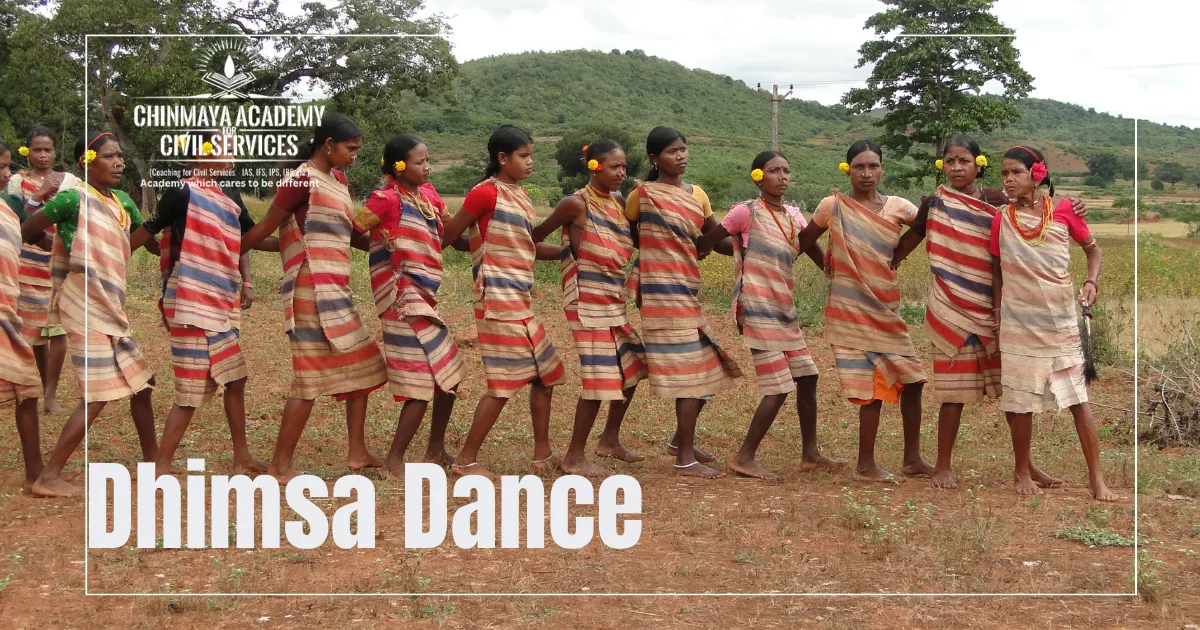
The Dhimsa dance is a vibrant and energetic tribal dance form originating from the Koraput district of Odisha, India. While traditionally performed by the Porja caste women, it has transcended boundaries and become a beloved cultural symbol across Andhra Pradesh, particularly in the regions around Araku Valley and Visakhapatnam.
Meaning and Origin:
- The name “Dhimsa” itself translates to “sound of footsteps,” highlighting the rhythmic tapping and stomping that are central to the dance.
- Although its exact origins are debated, evidence suggests it developed amongst the tribal communities of Koraput and later spread to neighbouring regions.
Performance:
- Typically, 15-20 women form a chain, holding hands or their clothes, and move in synchronized steps following the rhythmic beats of instruments like the Dappu, Mori, and Kiridi.
- The dance primarily involves footwork and hand movements, forming beautiful patterns and circles as the performers move.
- Interestingly, there are around 12 distinct variations of Dhimsa, each with its unique style and rhythm.
Significance:
- Dhimsa transcends mere entertainment; it holds deep cultural significance.
- Traditionally, it was performed by women to invoke blessings for their domestic well-being.
- It often features during weddings, festivals, and celebrations, promoting community spirit and togetherness.
- Today, Dhimsa serves as a powerful symbol of tribal identity and heritage, showcasing the rich cultural tapestry of Andhra Pradesh.
 Chinmaya IAS Academy – Current Affairs Chinmaya IAS Academy – Current Affairs
Chinmaya IAS Academy – Current Affairs Chinmaya IAS Academy – Current Affairs
